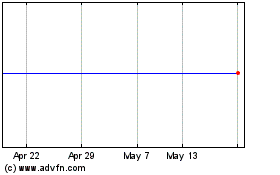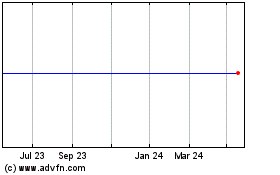The consolidated financial statements have been prepared in
accordance with International Financial Reporting Standards
("IFRSs") issued by the International Accounting Standards Board
("IASB") and the Listing Rules of the United Kingdom's Financial
Services Authority ("FSA"). These standards are subject to
interpretations issued from time to time by the International
Financial Reporting Interpretation Committee ("IFRIC"). These
consolidated financial statements have been prepared on a
historical cost basis, modified for fair values where required
under IFRS.
The preparation of the financial statements requires the use of
certain critical accounting estimates. It also necessitates
management to exercise its judgement in the process of applying the
Group's accounting policies. The areas involving a higher degree of
judgement or complexity, or areas where assumptions and estimates
are significant to the financial statements are disclosed in Note
5.
Note 30 to the financial statements include the Group's
objectives, policies and processes for managing its capital, its
financial risk management objectives and its exposure to credit
risk and liquidity risk.
The Group believes that it has sufficient financial resources to
manage its business risks successfully despite the current
uncertain economic outlook. The Company's forecasts and
projections, taking account reasonable changes in trading
performance (including oil price), show that the Company can
operate with its current cash holding.
The Directors have a reasonable expectation that the Group has
adequate resources to continue operational existence for the
foreseeable future. Thus they continue to adopt the going concern
basis of accounting in preparing the annual financial
statements.
3. adoption of new and revised standards
Standards, amendments and interpretations to existing standards
that are not effective yet and have not been early adopted by the
Group:
-- IAS 1 Presentation of Items of Other Comprehensive Income -
Amendments to IAS 1 (effective on or after 1 January 2013)
The amendments to IAS 1 change the grouping of items presented
in other comprehensive income (OCI). Items that could be
reclassified to profit or loss at a future point in time (for
example, net gain on hedge of net investment, exchange differences
on translation of foreign operations, net movement on cash flow
hedges and net loss or gain on available-for-sale financial assets)
would be presented separately from items that will never be
reclassified (for example, actuarial gains and losses on defined
benefit plans and revaluation of land and buildings). The amendment
affects presentation only and has no impact on the Group's
financial position or performance.
-- IAS 19 Employee Benefits (effective on or after 1 January 2013)
The revised standard will have no impact on the Group's
financial position or performance.
-- IAS 28 Investments in Associates and Joint Ventures
(effective on or after 1 January 2013)
The revised standard will have no impact on the Group's
financial position or performance.
-- IAS 32 Offsetting Financial Assets and Financial Liabilities
- Amendments to IAS 32(effective on or after 1 January 2014)
These amendments clarify the meaning of "currently has a legally
enforceable right to set-off". The amendments also clarify the
application of the IAS 32 offsetting criteria to settlement systems
(such as central clearing house systems) which apply gross
settlement mechanisms that are not simultaneous. These amendments
are not expected to impact the Group's financial position or
performance.
-- IFRS 1 Government Loans - Amendment to IFRS 1 (effective on or after 1 January 2013)
The amendments will have no impact on the Group's financial
position or performance.
-- IFRS 7 Disclosures - Offsetting Financial Assets and
Financial Liabilities - Amendment to IFRS 7 (effective on or after
1 January 2013)
These amendments require an entity to disclose information about
rights to set-off and related arrangements. The disclosures would
provide users with information that is useful in evaluating the
effect of netting arrangements on an entity's financial position.
The new disclosures are required for all recognized financial
instruments that are set off in accordance with IAS 32 Financial
Instruments: Presentation. The disclosures also apply to recognized
financial instruments that are subject to an enforceable master
netting arrangement or similar agreement, irrespective of whether
they are set off in accordance with IAS 32. These amendments will
have no impact the Group's financial position or performance.
-- IFRS 9 Financial instruments (effective on or after 1 January 2015)
IFRS 9, as issued, reflects the first phase of the IASB's work
on the replacement of IAS 39 and applies to classification and
measurement of financial assets and financial liabilities as
defined in IAS 39. The standard was initially effective for annual
periods beginning on or after 1 January 2013, but Amendments to
IFRS 9 Mandatory Effective Date of IFRS 9 and Transition
Disclosures, issued in December 2011, moved the mandatory effective
date to 1 January 2015. In subsequent phases, the IASB will address
hedge accounting and impairment of financial assets. The adoption
of the first phase of IFRS 9 will have an effect on the
classification and measurement of the Group's financial assets, but
will not have an impact on classification and measurements of
financial liabilities. The Group will quantify the effect in
conjunction with the other phases, when the final standard
including all phases is issued.
-- IFRS 10 Consolidated financial statements (effective 1 January 2013)
IFRS 10 replaces the portion of IAS 27 Consolidated and Separate
Financial Statements that addresses the accounting for consolidated
financial statements. It also addresses the issues raised in SIC-12
Consolidation - Special Purpose Entities.
IFRS 10 establishes a single control model that applies to all
entities including special purpose entities. The changes introduced
by IFRS 10 will require management to exercise significant judgment
to determine which entities are controlled and therefore are
required to be consolidated by a parent, compared with the
requirements that were in IAS 27. Based on the preliminary analyses
performed, IFRS 10 is not expected to have any impact on the
currently held investments of the Group.
-- IFRS 11 Joint Arrangements (effective 1 January 2013)
The new standard will have no impact on the Group's financial
position or performance.
-- IFRS 12 Disclosure if Interests in Other entities (effective 1 January 2013)
IFRS 12 includes all of the disclosures that were previously in
IAS 27 related to consolidated financial statements, as well as all
of the disclosures that were previously included in IAS 31 and IAS
28. These disclosures relate to an entity's interests in
subsidiaries, joint arrangements, associates and structured
entities. A number of new disclosures are also required. The new
standard will have no impact on the Group's financial position or
performance.
-- IFRS 13 Fair value measurement (effective 1 January 2013)
IFRS 13 establishes a single source of guidance under IFRS for
all fair value measurements. IFRS 13 does not change when an entity
is required to use fair value, but rather provides guidance on how
to measure fair value under IFRS when fair value is required or
permitted. The Group is currently assessing the impact that this
standard will have on the financial position and performance, but
based on the preliminary analyses, no material impact is
expected.
During the year ended 31 December2012 the Group has not early
adopted any other standard, interpretation or amendment that has
been issued but is not yet effective.
Annual Improvements May 2012
These improvements will not have an impact on the Group, but
include:
IFRS 1 First-time Adoption of International Financial Reporting
Standards
This improvement clarifies that an entity that stopped applying
IFRS in the past and chooses, or is required, to apply IFRS, has
the option to re-apply IFRS 1. If IFRS 1 is not re-applied, an
entity must retrospectively restate its financial statements as if
it had never stopped applying IFRS.
IAS 1 Presentation of Financial Statements
This improvement clarifies the difference between voluntary
additional comparative information and the minimum required
comparative information. Generally, the minimum required
comparative information is the previous period.
IAS 16 Property Plant and Equipment
This improvement clarifies that major spare parts and servicing
equipment that meet the definition of property, plant and equipment
are not inventory.
IAS 32 Financial Instruments, Presentation
This improvement clarifies that income taxes arising from
distributions to equity holders are accounted for in accordance
with IAS 12 Income Taxes.
IAS 34 Interim Financial Reporting
The amendment aligns the disclosure requirements for total
segment assets with total segment liabilities in interim financial
statements. This clarification also ensures that interim
disclosures are aligned with annual disclosures.
These improvements are effective for annual periods beginning on
or after 1 January 2013.
The accounting policies adopted are consistent with those of the
previous financial year, except for the
following amendments to IFRS effective as of 1 January 2012:
-- IAS 1 Presentation of Items of Other Comprehensive Income -
Amendments to IAS 1 (Effective on or after 1 July 2012)
-- IAS 12 Income Taxes (Amendment) - Deferred Taxes: Recovery of Underlying Assets;
-- IFRS 1 First-Time Adoption of International Financial
Reporting Standards (Amendment) - Severe Hyperinflation and Removal
of Fixed Dates for First-Time Adopters IFRS 7 Financial
Instruments: Disclosures (Amendments);
-- IFRS 7 Financial Instruments: Disclosures - Enhanced Derecognition Disclosure Requirements.
Exillon Energy (LSE:EXI)
Historical Stock Chart
From May 2024 to Jun 2024

Exillon Energy (LSE:EXI)
Historical Stock Chart
From Jun 2023 to Jun 2024
